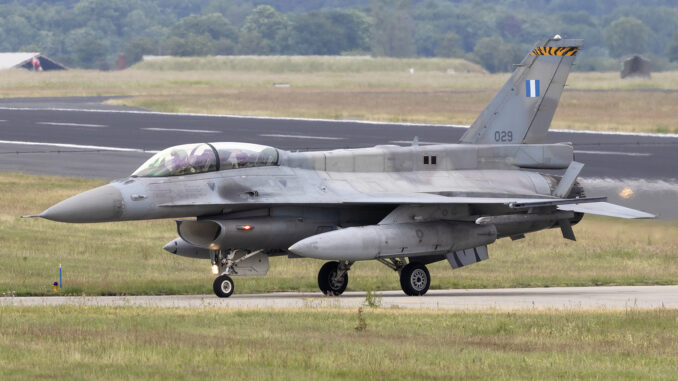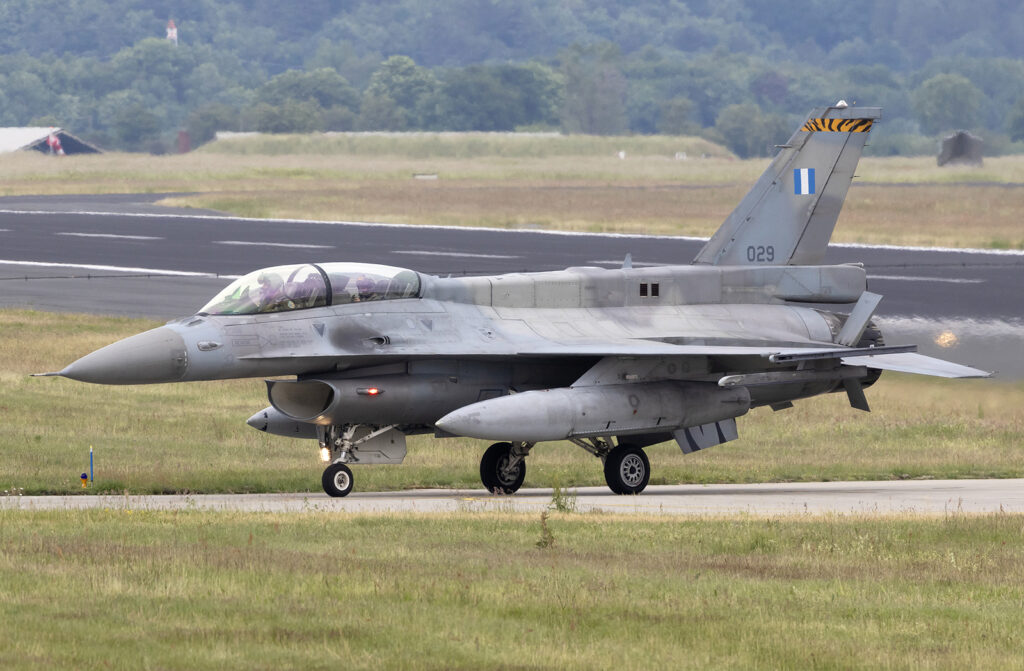
Find out how the US Navy tried to acquire Greek F-16s to boost its adversary capabilities, and its alternative solutions.
Faced with an increased need for aircraft for its adversary (‘red air’) squadrons, the US Navy tried to acquire used F-16s from Greece. These aircraft were to be used to improve air combat training against simulated adversaries. However, difficulties in the negotiations led the navy to turn to F-16s decommissioned by the US Air Force. The process of integrating these aircraft has encountered logistical and technical challenges, but it provides the navy with more modern aircraft for complex adversary missions. This process underlines the importance of the F-16 in maintaining air superiority.
Acquisition of Greek F-16s for adversary missions
The US Navy is in the process of acquiring Greek F-16s to modernise its adversary aircraft squadrons, also known as ‘red air’ squadrons. These squadrons play a crucial role in the training of American pilots, as they simulate enemy forces during air combat training.
The Greek F-16s were chosen because of their lower cost compared with new aircraft and their performance in adversary missions. Greece’s F-16s, notably the Block 30 models, were initially purchased between 1988 and 1990 as part of the ‘Peace Xenia I’ foreign military sales programme. These aircraft, although old, benefit from a life extension thanks to the Falcon UP programme, enabling them to remain operational for several thousand more hours.
However, the negotiations were unsuccessful, and the reasons for this remain unclear. This situation prompted the Navy to turn to another solution: the acquisition of F-16 aircraft decommissioned by the US Air Force. Although these aircraft are more recent than the Greek models, they still require adjustments to meet the specific needs of the navy’s adversary squadrons.
F-16 advantages in adversary squadrons
The F-16 is a high performance aircraft, perfectly suited to adversary missions. These aircraft are highly manoeuvrable and capable of simulating complex air threats, such as sophisticated enemy fighters. The use of the F-16 in air combat training allows American pilots to practise in more realistic conditions, thereby increasing their level of preparation.
The VFC-13 programme, based at Naval Air Station Fallon in Nevada, is one of the main squadrons using F-16s for adversary missions. These aircraft are used to simulate Russian or Chinese fighters during asymmetric air combat exercises. Thanks to their performance, the F-16s significantly outperform the F-5N aircraft previously used for similar missions.
The new F-16s acquired by the US Navy come from a batch of 30 aircraft decommissioned by the US Air Force. These aircraft still have between 2,000 and 3,000 flying hours remaining, making them ideal for adversary missions without requiring immediate renewal.

The technical challenges of F-16 integration
The introduction of these F-16s into the Navy’s adversary squadrons nevertheless presented considerable technical challenges. The transition process involved not only the integration of the aircraft themselves, but also the training of pilots and ground staff, as well as the acquisition of suitable simulators.
According to Major David Radomile, Safety Officer of the Tactical Support Wing (TSW), the transfer of squadrons to F-16s required the training of 30 pilots and the establishment of a new maintenance infrastructure for these aircraft. An F-16 simulator had to be purchased, while the F-5 simulator was moved to the New Orleans Naval Air Station.
In addition to pilot training, technical adjustments were required to adapt the F-16 to the needs of the navy. For example, these aircraft have been fitted with the AN/APG-83 AESA (Active Electronically Scanned Array) radar, which offers more advanced detection capabilities. In addition, a Red Net system has been installed to improve communication and coordination during combat exercises.
The importance of the F-16 in modernising the Navy’s capabilities
The acquisition of these F-16s by the US Navy highlights the urgent need to modernise its training capabilities. With the gradual withdrawal of the old F/A-18 Hornet aircraft, the Navy found itself faced with a shortage of aircraft capable of playing the role of adversaries in aerial exercises. This withdrawal has been accelerated by the high maintenance costs of the old aircraft.
Replacing the Hornets with F-16s will enable the Navy to maintain a fleet of high-performance adversary simulators, while reducing operating costs. In comparison, the operating cost of an F-16 is estimated at around 7,000 euros per flight hour, which is significantly lower than that of more recent aircraft such as the F/A-18 Super Hornet, whose cost exceeds 10,000 euros per flight hour.
This modernisation of adversary capabilities is also essential for maintaining the US Navy’s air superiority. By training pilots to deal with aircraft simulating sophisticated fighters, the Navy ensures that its forces will be ready to face real threats in wartime environments.
Strategic consequences and future prospects
The failure of negotiations with Greece for the acquisition of F-16s could open up opportunities for other countries, notably Ukraine. Greece is still seeking to dispose of its F-16 Block 30s, and these aircraft could be transferred to the Ukrainian air force, which is seeking to bolster its air capabilities in the current war. The delivery of 32 Greek F-16s to Ukraine could complement the aircraft already pledged by European countries such as Belgium and the Netherlands.
This situation shows how obsolete military aircraft can still play a crucial role in modern conflicts. The Greek F-16s, although old, could provide a valuable additional capability for Ukraine, enabling it to defend itself against more technologically advanced adversaries. This possibility also illustrates the flexibility of arms markets, where second-hand aircraft can be reused in different geopolitical contexts.
For the US Navy, the integration of the F-16 marks an important step in the modernisation of its adversary capabilities, while underlining the importance of having high-performance platforms to maintain realistic and effective training.
War Wings Daily is an independant magazine.